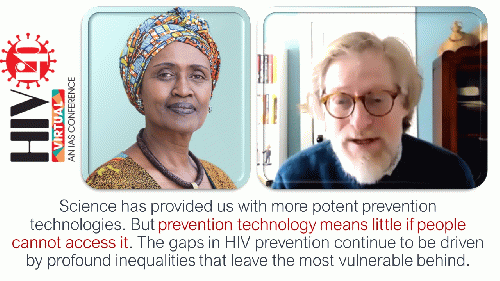Shobha Shukla - CNS

When we know how to prevent HIV transmission and have tools to help people with HIV stay alive and lead normal lives, how can we accept thousands of new HIV infections daily and AIDS related deaths daily?
(Image by CNS) Details DMCA
HIV science has advanced but policies and programmes have been slow to respond towards ending AIDS, said Mitchell Warren, co-chair of the global conference on HIV Research for Prevention (HIVR4P) and Executive Director of AVAC (Global Advocacy for HIV Prevention).
Scientific advances have seen huge gains on HIV prevention and treatment fronts. Sadly, what has not changed is the lack of equity in the response. Those who are the most marginalized, most stigmatised and most criminalized continue to remain so. No wonder, the number of new HIV infections has almost plateaued at 1.7 million per year, he said.
With only 118 months left to keep the promise of ending AIDS, it is vital to accelerate stronger action towards keeping these goals and targets. Mitchell Warren was in conversation with CNS (Citizen News Service) around the HIVR4P.
2021 marks the 40th year since the first case of AIDS was reported. While a lot has been achieved in this period, the fight against HIV is far from over. Despite having more tools than ever before to control the HIV epidemic, we still saw 690,000 persons dying of AIDS related causes in 2019. Speaking in a plenary at the virtual 4th HIVR4P conference, Winnie Byanyima, Executive Director of UNAIDS said that this is not progress enough as each one of those AIDS related deaths was preventable.
"Today, science has provided us with more potent prevention technologies. But prevention technology means little if people cannot access it. The gaps in HIV prevention continue to be driven by profound inequalities that leave the most vulnerable behind. While new HIV infections fell globally by 23% between 2010 and 2019, they barely changed among people who inject drugs, female sex workers and transgender women. This alarming epidemic is fuelled by gender inequalities, and social norms and structures that magnify risk to HIV", she said.
Although there is yet no cure or vaccine for HIV, science is making great strides in the field of HIV treatment and prevention- more user-friendly antiretroviral therapy, pre-exposure prophylaxis (oral PrEP), dapivirine vaginal ring, long acting injectables- and many others (like multipurpose prevention technologies (MPTs) to prevent HIV, STIs and unintended pregnancies) are in the offing. But translating scientific research into public health impact has been an Achilles heel.
Mitchell Warren rightly points out that, "Safe and and efficacious products, developed through years of research and clinical studies, are neither safe nor efficacious if they simply sit on the shelves and are not in the hands of people who need them. Sadly, very often in research and development, there is a disproportionate focus on the product and we tend to forget about the people."
(Note: You can view every article as one long page if you sign up as an Advocate Member, or higher).





